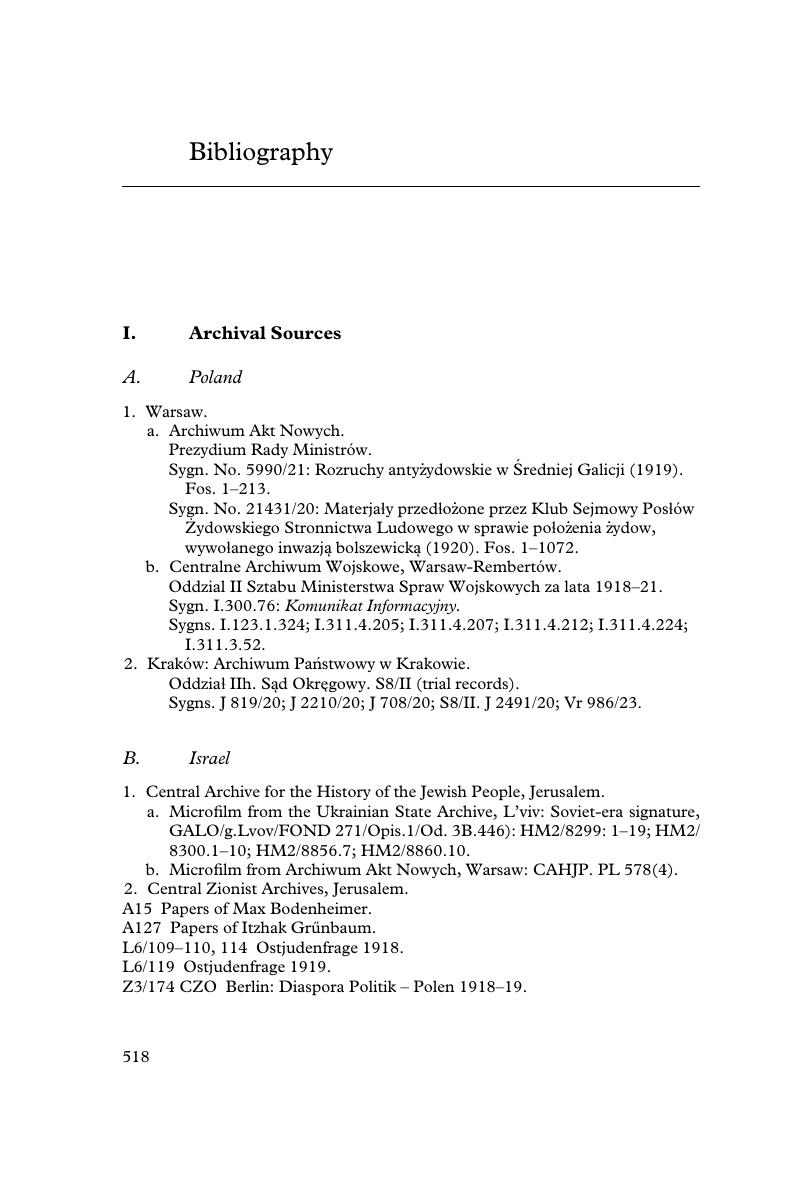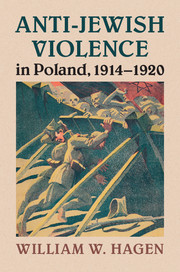Book contents
- Anti-Jewish Violence in Poland, 1914–1920
- Frontispiece
- Anti-Jewish Violence in Poland, 1914–1920
- Copyright page
- Epigraph
- Contents
- Figures
- Maps
- Preface
- Note on the Cover Image
- Guide to Polish Pronunciation
- Introduction
- Theoretical Footnote
- Part I War, Hunger, Revolt
- Part II National Independence’s After-Tremors
- Part III Pogroms’ Path Eastward, 1919–1920
- Conclusion
- Bibliography
- Index
- References
Bibliography
Published online by Cambridge University Press: 06 April 2018
- Anti-Jewish Violence in Poland, 1914–1920
- Frontispiece
- Anti-Jewish Violence in Poland, 1914–1920
- Copyright page
- Epigraph
- Contents
- Figures
- Maps
- Preface
- Note on the Cover Image
- Guide to Polish Pronunciation
- Introduction
- Theoretical Footnote
- Part I War, Hunger, Revolt
- Part II National Independence’s After-Tremors
- Part III Pogroms’ Path Eastward, 1919–1920
- Conclusion
- Bibliography
- Index
- References
Summary

- Type
- Chapter
- Information
- Anti-Jewish Violence in Poland, 1914–1920 , pp. 518 - 535Publisher: Cambridge University PressPrint publication year: 2018



